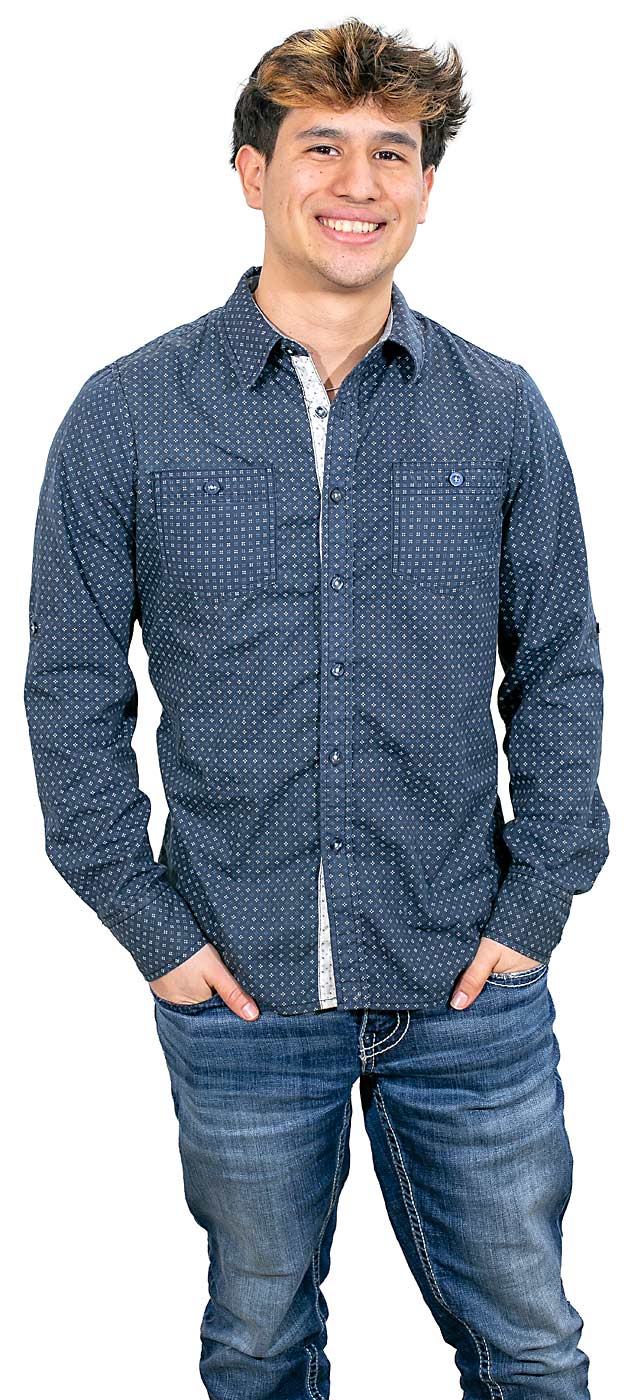family background/ Orlando is pursuing a graduate degree in horticulture at Washington State University. He is the son of Alison and Erik Howe; his biological mother is Maria Mendoza.
age/ 25
hometown/ Wenatchee, Washington
crops/ apples, cherries
role/ student, research technician
business/ Washington State University
How did you get your start?
I was born in Chelan, Washington, and moved to Wenatchee when I was around 5 or 6 years old. During high school, I did Running Start and originally wanted to be an engineer like my father.
I learned that I was trying to live up to an expectation that was not mine and set out to carve my own path, doing something that I was more passionate about. One of my first jobs in high school was working in a cherry orchard. I had this one supervisor that was a great mentor, who believed in me and inspired me to pursue a career in horticulture.

What were some of the lessons from that first job?
I learned it was really hard work, waking up at 4 a.m. every day during those three months. I was doing a job that slowly grew on me, even though the first month was awful because it was the hardest thing I’d done in my life to that point.
That work taught me so many different principles and so many different values about work that I cherish even today.
What did you do after that experience?
I went through the Running Start program in high school, focusing on engineering, and I was able to achieve my associate degree when I graduated. At that time, I decided to move on from an engineering path into an agricultural direction because I wanted to do something that I would truly enjoy.
I wanted to have a job where I would see the fruit of my labor and feel rewarded for my hard work. Then I learned about a transfer program to WSU in the fruit and vegetable management track.
My dad said that, as long as I kept going to college, I could live at the house and get free food. So, that was also another enticing thing.
What are you studying?
I’m researching the impact of leaf removal on bicolor apple cultivars and apple tree health. It’s an interesting project because I’m working with the removal of leaves — and on face value, you’d ask, “Why would you want to remove the leaves off a tree?” I certainly did ask that.
In my experiment, I removed 100 percent of the leaves on one of my treatments and it sunburned the fruit. So I don’t recommend that at all. On the other hand, especially in Honeycrisp, removing a percentage of the leaves is yielding good results because it’s improving red color, and red color correlates to higher profit margins for the grower.
What have you learned so far?
I have a couple of different experiments: a severity treatment and another with a timing treatment. In the timing one, I’m removing 50 percent of the leaves, 14 days before harvest and seven days before harvest, then comparing the results. In my preliminary findings there isn’t a super-significant difference between those factors.
Timing is a way to manage red color, but it may not be the best way — or not the most effective way. On the other hand, in my severity treatment, I have five different leaf removal treatments of 100 percent, 75 percent, 50 percent, 25 percent and 0 percent, which is my control. In that subexperiment, I’m seeing a lot of different results. Because, if you remove 25 percent, well, that’s a substantial difference to removing 75 percent.
A challenge has been finding a good threshold of what I can recommend to a grower. For example, if you remove this many leaves, or this much of the canopy, not only are you letting more sun exposure into your canopy, but you’re also going to be more susceptible to sunburn because you have less leaves.
These experiments are pretty interesting to me because we’re quantifying a horticultural practice that may not have always been quantifiable. Growers may be airblasting leaves off, but they don’t know how much of those leaves are getting blasted off.
But I hope that if a grower can quantify that, then they’ll know by removing this percentage of the tree canopy, they may yield these results. My research is quantifying that horticultural practice with the hope it helps growers in the future.
What advice would you give to other young growers?
I would say get connected to people in this industry in some way or another and put your foot in the door. The reason why I got the opportunity to work as a research technician was because my neighbor was an entomologist who worked at WSU and referred me to an excellent advisor.
I was never a big fan of bugs, but I really enjoyed working in agriculture. Now I’m getting to discover why plants behave a particular way and learn what they do and why it’s important. All of it started with just a simple conversation about what I was interested in. It was very fruitful, and it changed my life.






Leave A Comment